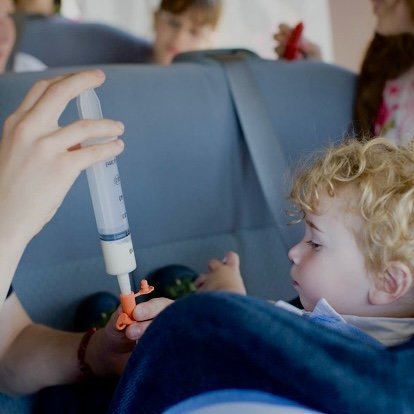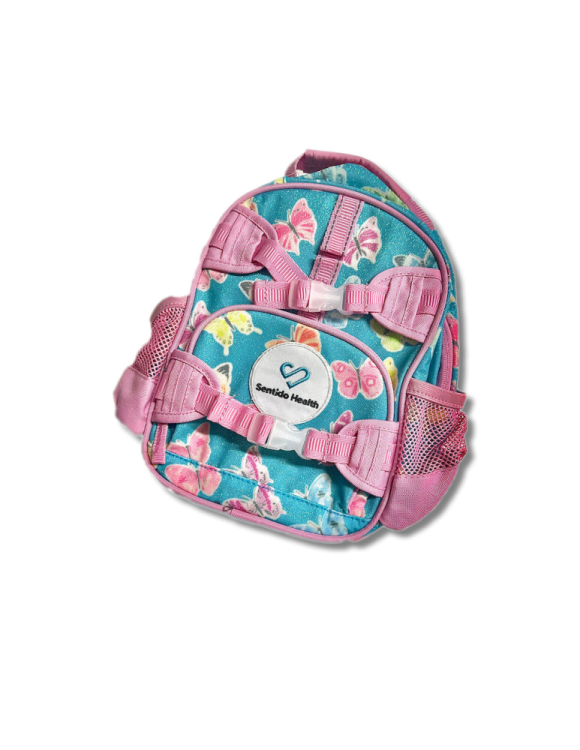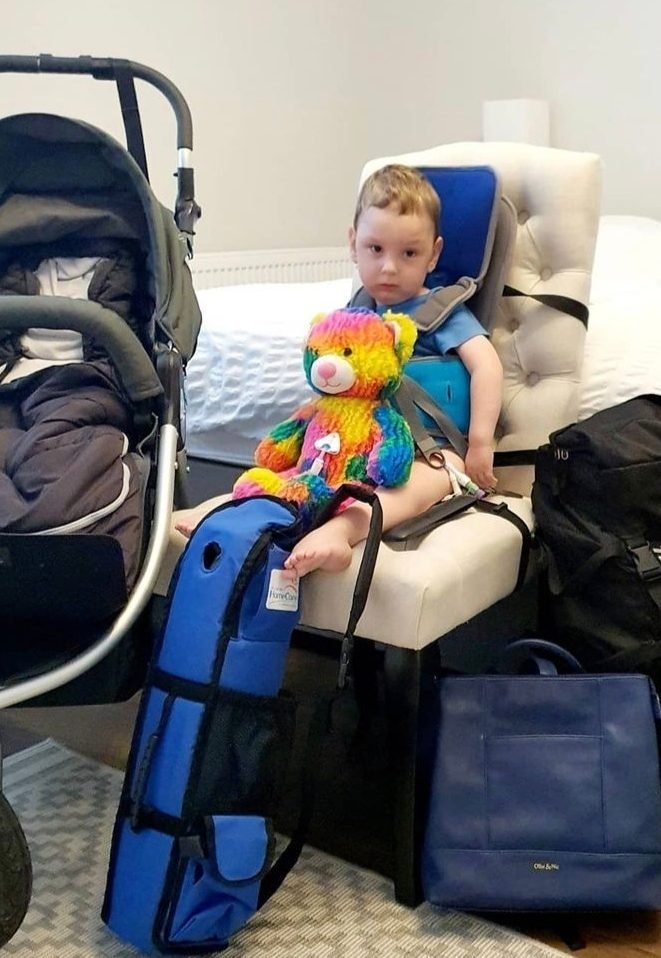#TubieTalk: Traveling with a Feeding Tube
Sentido Health is back with our next edition of #Tubietalk. This month’s topic is on what it is like Traveling with a Feeding Tube. Whether you are a tubie yourself or a caregiver, parent, or friend of a tubie, successful tube feeding on the go is a priority. Making sure you are prepared for a successful feed as well as always having proper supplies with you, such as your tube feeding emergency kit, will ensure you will be able to administer away from the comfort of your home.
After reaching out to people within the tube feeding community, we received various helpful tips, tricks, and advice for traveling with a feeding tube. We hope sharing this first-hand knowledge helps others in similar situations. Big thank you to everyone who shared their experiences and advice on this topic.
TALK TO YOUR DOCTOR PRIOR TO TRAVELING
Consult your doctor before traveling to ensure your travel plans align with safe tube feeding practices. Have your doctor create a medical travel letter that includes: a description of your child’s condition, medical equipment/supplies needed during travel, and contact information. For an example medical travel letter click here.
GENERAL TRAVEL TIPS:
“Make a list of all the things you need on a daily basis. I always like to make sure I have extras as well because you never know what could happen!” – Stacey M.
“This miniature backpack is a wonderful tool to have while traveling with a feeding tube! It has lots of space for the pump, a small ice pack (if needed) and a can or bottle of formula, plus tubing stations at the top and bottom. The front pouch has room for needed meds, syringes, etc., and each side can hold regular sized bottled water. Picture enclosed.”- Diana C.
“Keep your backup button in the diaper bag, along with some lube, q-tips, baby wipes, an extension tube, the balloon-filling syringe, and a 60mL syringe. Also get a Squeasy Snacker bottle for carrying water or formula. You can insert the tip of your 60mL syringe into the spout of the Squeasy Snacker to fill up your syringe with no leaks or messes. – Olivia S.
“Always take an extra button, extension, and bag. Extra extra extra, there is never a way to take to make extra supplies, you never know what can happen. We use a backpack to carry our kiddos pump and it works wonders for travel and ease of carrying.” – Virginia S.
“I always carry extra everything! I prime our tubing with water and keep our formula in an insulated lunch bag with an ice pack and have plenty of syringes for flushing. I carry an extra gtube just in case.” – Kelsey C.
“Don’t be afraid. Try a dry run at a hotel down the road if needed. Pre-fill meds and food for the day of traveling. Take a few spares of items but don’t overpack. There are some great sites that can help when stranded and they’re to be used! We don’t have the button so make sure we find our nearest ‘gastro peads hospital’ and not just hospital. All kids eat differently per day, play around with food times to suit the plans so your child is fed but you are not stressed. Dehydrate food- add water to it at a later time if you are going where there is no kitchen access. Most hotels will add a travel fridge or allow you to use theirs for the fridge meds.” -Emma R.
CAR RIDES:
“For long rides I have him in clothes with a pouch like a hoodie. I’ll poke a hole on the inside of the pouch pocket to be able to roll up the extension and keep it attached to him but also tucked away in the pocket and still easily accessible for feeds and meds.” – Kristina S.
“Never be ashamed to pull over or stop somewhere to fix a pump, it refills a bag. Kids have to eat, ours are no different. If possible, for long or extended trips take a backup pump or charger.” – Virginia S.
“When I go to the store. I remove the extension off the tubie so it doesn’t get yanked on. Same goes when we travel.” – Beverly H.
AIRLINE TRAVEL:
**Before airline travel, be sure to contact the airline at least 72 hours in advance. Do your research and know the protocol for traveling with medical conditions and disabilities. Contacting TSA Cares is a great start, as they will be able to give advice on your specific needs. Consider shipping your supplies to your destination for longer trips. For baggage used to hold medical supplies, ask your airline about waived baggage fees.
“After you made your booking, contact the airline(s) to check whether they can give you extra luggage and if they need you to send your medical letter in advance.
“Make sure to have your medical letter on hand, it should explain your condition, medical devices and the equipment and medication you need to have with you. Some airlines need your medical letter to be quite recent so always check prior to flying” – Anna M.
“If you can’t book special assistance, most airports have fast track tickets to security which will make the process a lot quicker.” – Anna M.
“Start packing as early as possible, this will give you peace of mind. It’s easier to just double check a day before the flight instead of scrambling to get everything together!” – Anna M.
“Create an emergency plan! In case of emergency, have a plan in place by researching nearby children’s hospitals and keep an emergency kit with extra supplies, child’s medical records, and any other important documentation.”
“ALWAYS pack 2-3 days’ worth of supplies and meds into your hand luggage in case your checked bag gets lost/delayed – ask your supply company for a spare feeding/IV pump for the duration of your travels, they’re usually happy to provide these for free.” – Anna M.
Pack your liquids last for easy access. Use a large plastic zippered bag and place them in a separate bin when going through security. Be sure to tell the TSA agent that you have medical liquids. Note: You are allowed to bring quart-sized medical liquids throughsecurity using the 3-1-1 rule.
“Always have a few days’ extra supplies and meds I’m case your flight back home is delayed – book assistance at the airport, it’ll make things less stressful.” – Anna M.
“Vacuum storage bags are a godsend for syringes, giving sets and the like!” – Anna M.
“Get luggage tags that say “medical equipment” – Anna M.
**NOTE: THIS INFORMATION SHOULD NOT BE USED IN PLACE OF THE ADVICE AND DIRECTION OF YOUR DOCTOR.
REMEMBER TO JOIN #TUBIETALK
We hope you enjoyed this edition of #TubieTalk. Hearing stories and words of advice from other tubie families on traveling with a feeding tube, helps spread kindness, creates community, and builds advocacy. If you are a part of the tubie world and find these heartfelt stories and words of encouragement useful, please feel free to leave your own tube feeding advice HERE to support others around you! You can also request future topics that you can learn from as well.
If you want to know what sibling inclusion looks like in the tubie feeding world, click HERE to see heartfelt stories, experiences, and words of advice from tubie families.
If you are new to tube feeding, be sure to check out our first edition of #TubieTalk – Tube Feeding Advice from Moms. This past blog discusses tubie advice, tips, and words of encouragement for new tube feeding families.
RESOURCES:
https://oley.org/page/travelletterTubeIV
https://www.tsa.gov/videos/travel-tips-3-1-1-liquids-rule







